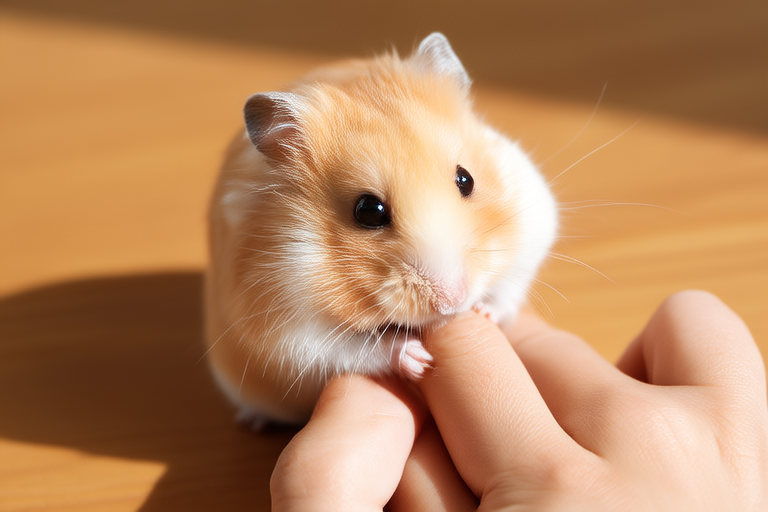The Ultimate Guide to Keeping Your Hamster Happy and Healthy
Hamsters are delightful, small pets that bring joy and companionship to countless households. However, their well-being depends on the care and attention they receive. This guide will walk you through everything you need to know to ensure your hamster thrives both physically and emotionally.
Selecting the Right Cage
A hamster’s cage is its home, and choosing the right one is crucial for its comfort and happiness.
Size Matters
- Minimum Space: A single hamster needs at least 450 square inches of floor space. Larger cages allow more room for exercise and enrichment.
- Multilevel Cages: While they look appealing, avoid cages with steep ramps or high platforms as hamsters can fall and injure themselves.
Ventilation and Material
- Wire Cages: Provide excellent ventilation but may lead to bedding being kicked out. Use a deep base tray to prevent mess.
- Glass Tanks: Retain heat better but require proper ventilation through mesh tops.
Location of the Cage
- Place the cage in a quiet area away from direct sunlight, drafts, and loud noises.
- Maintain a stable temperature between 65-75°F (18-24°C).
Proper Diet and Nutrition
A balanced diet is vital for your hamster’s health and longevity.
Commercial Hamster Food
- Choose high-quality pellet-based food to ensure all nutritional needs are met.
- Avoid mixes with excessive seeds and nuts, as hamsters may selectively eat only their favorites.
Fresh Foods
- Offer small amounts of fresh vegetables like carrots, broccoli, and spinach.
- Fruits such as apples (without seeds) and berries can be given occasionally as treats.
- Introduce new foods gradually to avoid digestive upset.
Water and Treats
- Provide fresh, clean water daily using a sipper bottle.
- Limit sugary or fatty treats to prevent obesity and dental issues.
Exercise and Enrichment
Hamsters are naturally active creatures and need opportunities to move and explore.
Exercise Wheels
- Choose a solid-surface wheel that is large enough for your hamster to run comfortably without arching its back.
- Clean the wheel regularly to maintain hygiene.
Toys and Activities
- Provide tunnels, hideouts, and chew toys made from safe materials like untreated wood.
- Rotate toys weekly to keep your hamster engaged and curious.
Out-of-Cage Playtime
- Supervise playtime in a secure, hamster-proofed area to prevent escapes or accidents.
- Create obstacle courses using cardboard boxes and tubes for mental stimulation.
Grooming and Hygiene
Hamsters are generally clean animals, but they still require some grooming assistance.
Bathing
- Never bathe your hamster in water; it can cause stress and health problems.
- Use a sand bath designed for small rodents if your hamster gets particularly dirty.
Nail Trimming
- Check your hamster’s nails regularly and trim them if they become overgrown.
- Use small animal nail clippers and be cautious not to cut the quick.
Cleaning the Cage
- Spot-clean daily by removing soiled bedding and uneaten food.
- Perform a full cage cleaning once a week, replacing all bedding and disinfecting surfaces with pet-safe cleaners.
Health Monitoring
Regular observation helps catch potential health issues early.
Signs of Illness
- Watch for symptoms such as lethargy, loss of appetite, diarrhea, or unusual lumps.
- Respiratory issues, indicated by wheezing or sneezing, require immediate veterinary attention.
Veterinary Care
- Find a vet experienced with small animals before emergencies arise.
- Schedule annual check-ups to monitor your hamster’s overall health.
Dental Health
- Hamsters’ teeth grow continuously, so provide plenty of chewable items to wear them down.
- If you notice drooling or difficulty eating, consult a vet immediately.
Bonding Tips
Building trust with your hamster takes time and patience.
Handling Techniques
- Start by letting your hamster get used to your scent by placing your hand in the cage without grabbing it.
- Pick up your hamster gently with cupped hands, avoiding sudden movements.
Positive Reinforcement
- Reward your hamster with small treats when it approaches you willingly.
- Talk softly and offer gentle strokes to build confidence.
Understanding Behavior
- Learn to interpret body language, such as puffing up cheeks (storing food) or flattening ears (signaling fear).
- Respect your hamster’s boundaries and avoid forcing interactions.
Conclusion
Providing a happy and healthy life for your hamster involves understanding its unique needs and behaviors. By selecting the right cage, offering a nutritious diet, encouraging exercise, maintaining hygiene, monitoring health, and fostering a strong bond, you can ensure your furry friend thrives. Remember, every hamster is an individual, so observe and adapt your care routine accordingly. With love and dedication, your hamster will reward you with endless charm and companionship.
